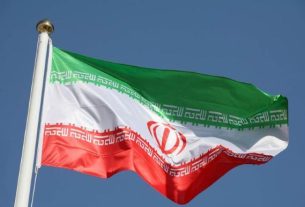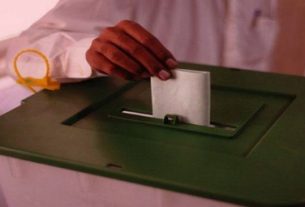Pakistani news channels have become a tool in the hand of big businesses, real estate tycoons in particular, for exerting power and protecting their business interests. As television loses relevance in the media landscape, the news industry’s future is uncertain.
by Dr. Hasan Zafar
When discussing Pakistani news channels, one encounters numerous questions regarding their quality, independence, social and national responsibility, opinion shaping, and their influence on the social and political choices of the audience.
General Pervez Musharraf granted TV channel licences to private operators under the PEMRA Ordinance 2002, initiating a significant transformation. The first to broadcast was ARY News, owned by a gold merchant, Abdur Razzaq Yaqoob, marking the first instance of Pakistan’s news media being controlled by a business group. This was followed by GEO News of the Jang Media Group, which had a history in print journalism dating back to Pakistan’s inception in 1947. Subsequently, numerous private news and entertainment channels emerged. Previously, PTV Khabarnama at 9 PM was the sole source of news for the Pakistani public.
Private channels introduced new faces in news bulletins and current affairs shows, bringing a novelty to Pakistani screens, often more glamorous and dramatic compared to the stiff and sometimes tedious presentations of PTV newscasters and programme hosts. This was a welcome change. However, while the news media experienced greater freedom and robust reporting, it stirred many controversies concerning journalistic responsibility.
To explore and understand these developments better, I interviewed Faisal Sherjan, a distinguished media executive associated with private channels since their inception. The 24/7 broadcast of these channels raised expectations but also introduced problems. They created polarization, as these channels adhered firmly to certain standpoints, driven by their political leanings and interests.
News channels, driven by the need to attract audiences, were inevitably agenda-led. When the audience is monetised, the independence required to run an unbiased news channel is compromised.
Sherjan argues that the increasing polarization in the political domain is also reflected in the media. One might argue that this may work both ways. Sherjan highlights a critical flaw in the PEMRA ordinance, which permitted advertising on news channels, thus involving advertisers in content creation. The result has been evident – sensational presentations and loud breaking news.
News channels, driven by the need to attract audiences, were inevitably agenda-led. When the audience is monetised, the independence required to run an unbiased news channel is compromised. Leading independent news channels worldwide, such as BBC, CNN, and Channel 4, operate on subscriptions rather than advertisements, ensuring independent editorial policies and high standards. In contrast, in Pakistan, the payments for cable services go to the cable operators, not the news channels, which makes a significant difference and highlights a fundamental problem with the PEMRA ordinance.
Another issue arises from the frequent violations of the PEMRA ordinance. For instance, the law allows only 12 minutes of advertisements per hour of airtime, yet most channels allocate 18 to 24 minutes to advertising during peak hours (7 to 11 PM).
Consequently, news has become a means of generating revenue through sensationalism and glamour, attracting audiences but compromising the quality and fairness of television journalism. According to Sherjan, “audiences do not inherently exist; they need to be constructed.” In their pursuit of audiences, Pakistani news channels often compromised ethical principles of reporting and news gathering, degraded the quality of language, and frequently invaded private spaces.
The situation worsened when real estate owners entered the industry, fundamentally changing the nature and objectives of news channels. The initial political polarization that had guided the editorial policy of the channels shifted to a different domain – protecting business interests through the power that these channels wielded.
With the rapid growth of television channels, there was also a noticeable shortage of trained personnel, including news presenters, producers, editorial, and technical staff. Faisal Sherjan, who headed GEO News International, shared his experience of hiring for these channels. Many retirees from PTV joined these channels in senior positions, alongside individuals with no prior television experience. These newcomers received training from foreign news channel personnel; however, this training did not last long once they began working in these channels. They resorted to various tactics to capture the audience by any means available. This trend intensified as more business-backed news channels obtained licences.
The businessmen, who had now become news channel CEOs, had two clear objectives: to profit from news and to use these channels to exert influence in the political and social arenas to promote their other businesses. The situation worsened when real estate owners entered the industry, fundamentally changing the nature and objectives of news channels. The initial political polarization that had guided the editorial policy of the channels shifted to a different domain – protecting business interests through the power that these channels wielded.
At this juncture, social media began to challenge the dominance of television channels. The advent of 4G networks and the widespread availability of smartphones post-2015 significantly altered the media landscape. The unchallenged power that news channels had enjoyed for over a decade gradually started to decline. As the quality and quantity of smartphones increased, the influence of social media expanded. By 2023, statistics showed that nearly 55% of advertising revenue had shifted to social media. Just as television had once impacted print media in the post-2002 era, digital and social media began to affect television in a similar manner.
Now, many news anchors from these channels have their own YouTube channels. This earns them good revenue, based on their individual popularity with their audience. However, these individuals are not bereft of their political alliances. Consequently, they often appear to satisfy the political desires of their audiences, rather than offering unbiased political analysis. They learnt this on their television jobs. Television channels, on the other hand, survive on advertising and funding from different sources who benefit from their influence.
If they are pro-government, they get advertisements from over two hundred state-owned enterprises, which perpetually incur losses. In return, these channels do not support their privatisation. Those in the other camp, supporting the opposition, are likely to have a greater number of viewers, and hence attract more advertisers. These are no secrets. I am only writing this to underscore the point that these news channels are far from independent in any way. They are either pro-government or pro-advertisers.
One thing is certain as we observe this landscape: television media has had its heyday. However, this does not mean it will disappear completely. Only those who adapt to the change will survive.
Faisal Sherjan informed me that many channels broadcasting news do not possess licences for a news channel. Instead, their licences are for education, real estate, or simply entertainment purposes. However, PEMRA turns a blind eye as long as these channels support the government and criticise the opposition in their news programs. When the day of reckoning arrives, most of these channels will have to go off the air. Some will have to pay hefty fines for allocating excessive advertising time during peak hours, in violation of the law. This will result in a large number of employees losing their jobs. Most of these television channels are already facing severe financial difficulties due to competition from social and digital media, as well as their own poor performance on screen. Many have gone off the air or have significantly reduced their broadcasts. Stories of unpaid and underpaid news and production staff are rife in press clubs.
With the growth of television channels since 2002, nearly all universities in Pakistan introduced specialized degrees in their mass communication departments. This business thrived for over a decade, benefiting both the channels and the universities. As the trend has shifted to social and digital media, the situation appears bleak, both for students enrolled in these degrees and for those already employed by the channels. Many of them receive scant payment, and sometimes none at all. It is unlikely to improve. However, we must leave this concern to university administrations and to individuals still choosing to pursue these degrees.
My personal experience of working in public and private sector universities from 2005 to 2010 was dismal. Most students lacked one fundamental requirement for any media career: good Urdu writing skills. Many aspiring news anchors had poor Urdu accents, making them unsuitable for broadcast. However, many of them were successful in obtaining on-screen and off-screen jobs in these channels. Clearly, quality was not a priority for these channels. They needed to fill slots, regardless of the quality of the personnel. The results were evident on the screens.
One thing is certain as we observe this landscape: television media has had its heyday. However, this does not mean it will disappear completely. Only those who adapt to the change will survive. The signs are beginning to emerge. Many channels now have their podcasts on YouTube and other social media platforms.
Whatever the future of these channels may be, this discussion leaves us with one fundamental question: notwithstanding the role they have played in bringing information to the masses, how much have they contributed to political polarisation and instability in the country? Have they done more good than harm to the national fabric? In what ways has the nation benefitted from these channels? If, on balance, the answers to these questions are negative, we ought to ask: why do they exist? __Courtesy The Friday Times Pakistan





